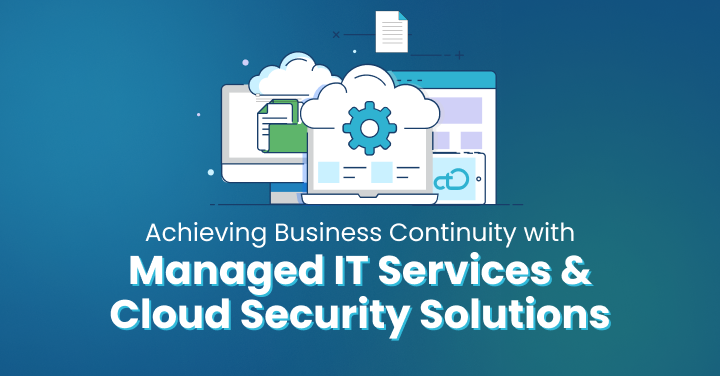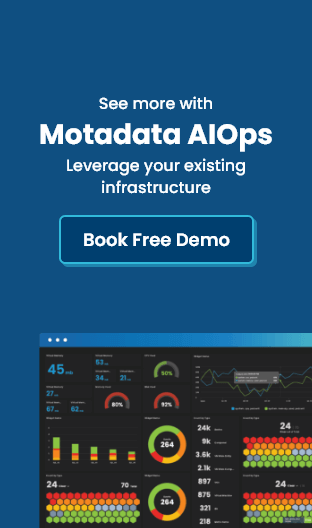Did you know that data breaches cost companies $4.45 million on average? Enterprise cloud security isn’t just for big corporations anymore.
Fortunately, investing in proper cloud security for businesses makes financial sense. Companies anticipate saving approximately $1.76 million by switching to automated approaches for protecting vital assets.
Additionally, cloud-based solutions have demonstrated a return on investment 4.01 times greater than on-premises alternatives.
The global managed cloud security services market is booming, expected to exceed $50 billion by 2028 with double-digit growth annually.
This growth reflects a simple truth: businesses of all sizes need robust protection in today’s digital landscape.
In this step-by-step guide, we’ll show you how small businesses can implement enterprise-level cloud security without breaking the bank.
From assessing your current vulnerabilities to choosing the right provider, we’ll cover everything you need to know to protect your business with the same level of security that larger enterprises enjoy.
Understanding Enterprise-Level Cloud Security
Enterprise cloud security represents a comprehensive framework of technologies, policies, and controls designed to protect cloud-based environments.
Unlike traditional security approaches, it addresses the unique challenges of distributed resources, dynamic scaling, and multi-tenancy in cloud environments.
The cornerstone of enterprise cloud security is the shared responsibility model. This framework establishes that security isn’t solely the cloud service provider’s job but rather a partnership between providers and customers.
Essentially, while providers secure the underlying infrastructure, businesses remain responsible for protecting their data, applications, and user access.
Different cloud deployment models require distinct security considerations:
- Public clouds managed by providers like AWS or Google Cloud offer scalability but need robust encryption and access controls
- Private clouds excel in security for sensitive industries like healthcare but come with higher costs
- Hybrid clouds combine public and private environments, requiring consistent security across both
Furthermore, enterprise cloud security differs fundamentally from traditional on-premises security. Cloud environments operate without clear perimeters, presenting unique security challenges that require automation, continuous monitoring, and distributed access controls.
Security components typically include identity and access management, data governance, compliance, risk mitigation, and disaster recovery. These elements work together to create a multi-layered defense system adapting to emerging threats.
The benefits extend beyond protection. Cloud security solutions provide centralized visibility, continuous monitoring, and regular vulnerability assessment.
They also offer significant cost savings compared to traditional security approaches, with cloud-based solutions showing a return on investment 4.01 times greater than on-premises alternatives.
Organizations face evolving threats including data breaches, cloud misconfigurations, advanced persistent threats, insecure APIs, and account hijacking.
Therefore, a robust enterprise cloud security strategy must ensure resilience, compliance, and adaptability to these challenges.
Challenges Small Businesses Face in Cybersecurity
Small businesses increasingly find themselves in cybercriminals’ crosshairs, yet face unique obstacles in defending their digital assets.
Let’s examine the key challenges preventing many from implementing robust enterprise cloud security solutions.
1. Limited IT budgets and resources
Budget constraints represent the primary hurdle for small businesses seeking better protection. 54% of cyber leaders cite budget limitations as their top challenge, with two-thirds of SMBs struggling to adopt new technology due to financial constraints.
Consequently, many companies make dangerous security tradeoffs, prioritizing immediate operational needs over long-term protection.
2. Lack of in-house security expertise
Perhaps most concerning, 48% of small and medium companies have their cybersecurity managed by a non-expert. This skills gap creates dangerous blind spots, as technical complexity often overwhelms staff lacking specialized training.
Without dedicated security professionals, many businesses struggle to implement even basic protections against increasingly sophisticated attacks.
3. Compliance and data privacy concerns
Small businesses must navigate complex regulatory landscapes without dedicated compliance teams. From GDPR to HIPAA to PCI DSS, these organizations face potential penalties without adequate resources to manage requirements.
Compliance costs can be substantial—with CCPA implementation costing businesses an estimated $55 billion initially, creating additional strain on already limited resources.
Overall, these challenges explain why 64% of SMBs expect to increase cybersecurity spending in 2025, recognizing both their vulnerability and the growing necessity of enterprise-grade protection.
Key Benefits of Adopting Enterprise-Level Cloud Security
Moving beyond the challenges, enterprise cloud security brings numerous advantages that previously were accessible only to large corporations.
Here’s why small businesses should consider making the investment:
1. Enhanced Data Protection
Enterprise-grade cloud security offers sophisticated encryption for data both at rest and in transit. This multi-layered protection significantly reduces the risk of unauthorized access, ensuring your sensitive information remains confidential even if other security measures fail.
2. Scalability and Flexibility
As your business grows, enterprise cloud security solutions grow alongside you. They adapt instantly to changing requirements without requiring costly hardware investments or complicated reconfigurations.
3. Regulatory Compliance Support
These solutions feature built-in compliance tools to help navigate complex regulatory landscapes. From automatic documentation to regular audits, they simplify meeting industry-specific requirements across different jurisdictions.
4. Advanced Threat Detection and Response
Enterprise systems employ AI-powered monitoring that identifies suspicious activities in real-time, often catching threats before they cause damage. This proactive approach minimizes potential downtime and data loss.
5. Cost Efficiency
Although initially appearing expensive, managed cloud security services eliminate the need for specialized in-house staff and expensive hardware. Monthly subscription models transform unpredictable capital expenses into manageable operational costs.
6. Improved Customer Trust
Implementing robust security measures demonstrates your commitment to protecting customer data. This builds confidence in your brand, creating a competitive advantage particularly valuable for businesses handling sensitive information.
Steps for Small Businesses to Implement Enterprise-Level Cloud Security
Implementing enterprise-level cloud security requires strategic planning and execution. As 43% of cyber issues now target small businesses, taking concrete steps toward robust protection has never been more critical.
1. Assess current cloud environment and security gaps
Begin with a comprehensive security audit of your existing cloud setup. Identify vulnerabilities through scanning tools and evaluate risks based on potential impact to your operations.
Define the scope of your assessment—examining applications, data centers, and infrastructure—to understand exactly where your protection falls short.
2. Choose the right cloud security provider
When selecting a provider, prioritize those offering strong security certifications (SOC2, ISO 27001), transparent policies, and 24/7 support.
Look specifically for zero-trust architecture implementation, at minimum AES-256 encryption, and regular third-party security audits. Remember, flexibility is key—choose solutions that can accommodate your growing business in both size and complexity.
3. Adopt a layered security approach
Implement a multi-layered defense strategy where each security element works independently yet collectively. This “defense in depth” approach includes:
- Perimeter defenses (firewalls, intrusion detection)
- Endpoint protection (antivirus, device management)
- Network security (encryption, access controls)
- Data security (regular backups, encryption)
4. Train staff on security best practices
Since 68% of recent cyberattacks involved human factors, comprehensive employee education is essential. Training should cover phishing recognition, password security, data handling protocols, and incident reporting procedures. Make security awareness an ongoing conversation rather than occasional training.
5. Continuously monitor and update security measures
Security isn’t “set and forget”—it requires constant vigilance. Implement real-time monitoring systems that alert you to unusual activities. Regularly update threat signatures, firmware, and security patches to address emerging vulnerabilities.
Common Misconceptions about Enterprise-Level Security for SMBs
Many small business owners hesitate to implement enterprise cloud security based on persistent myths. Let’s debunk these misconceptions that prevent companies from securing their digital assets properly.
“It’s too expensive” myth
The perception that enterprise cloud security requires massive investment deters many small businesses. Nevertheless, the reality presents a different picture.
Modern cloud security solutions operate on subscription models, eliminating upfront hardware costs and spreading expenses over time. Moreover, consider the alternative—the average data breach costs $4.45 million, making prevention substantially more affordable than recovery.
“Only big companies need it” myth
“Hackers only target large corporations” remains a dangerous assumption. In fact, smaller businesses frequently face attacks precisely because they appear vulnerable.
Cybercriminals understand these organizations often lack robust protection yet possess valuable data. Surprisingly, 43% of cyberattacks specifically target small businesses, making enterprise-level security not just advisable but essential.
“Cloud provider handles everything” myth
Many business owners mistakenly believe their cloud provider automatically handles all security concerns. This misunderstanding stems from confusion about the shared responsibility model.
Cloud providers indeed secure their infrastructure; however, protecting data, managing access controls, and configuring applications correctly remain the customer’s responsibility. Ultimately, security breaches often result from misconfigurations rather than provider failures.
Understanding these realities helps small businesses make informed decisions about managed cloud security services without falling prey to outdated assumptions.
Conclusion
Enterprise cloud security has evolved from being exclusively for large corporations to an essential investment for businesses of all sizes.
Throughout this guide, we’ve seen how small businesses can effectively implement enterprise-grade protection without breaking the bank.
First and foremost, understanding your current vulnerabilities provides the foundation for any security strategy. After completing a thorough assessment, selecting the right provider becomes your next crucial decision. Remember that the best security approach combines multiple protective layers while involving all team members through comprehensive training.
Contrary to popular belief, cloud security solutions offer remarkable cost efficiency when compared to the potential financial devastation of a breach. Additionally, these solutions scale alongside your business, eliminating the need for constant infrastructure upgrades as you grow.
The shared responsibility model remains fundamental to successful cloud security implementation. Your provider handles infrastructure protection, while you maintain responsibility for data security, access controls, and proper configuration.
Small businesses can no longer afford to believe they’re flying under hackers’ radar. Instead, embracing enterprise-level security represents a competitive advantage, building customer trust while protecting your most valuable digital assets.
We recommend starting small if necessary, but starting now. The threat landscape continues to evolve rapidly, yet the tools to protect your business have become more accessible than ever. By taking action today, you safeguard not just your data but your business’s future in an increasingly digital world.
At Motadata, we believe enterprise cloud security is no longer reserved for large corporations; it’s essential for businesses of every size.
Our IT Service Management and Unified Observability platforms are designed to deliver enterprise-grade protection that’s accessible, scalable, and cost-efficient for growing organizations.
We start by helping businesses uncover vulnerabilities through intelligent asset management and workflow automation.
Our service desk and patch management capabilities then ensure rapid incident resolution and continuous system hardening.
Combined with log analytics, infrastructure monitoring, and network observability, we provide a multi-layered defense that keeps your business one step ahead of threats.
We understand that true security is not just about technology but about people and processes. That’s why our solutions empower teams with visibility, automation, and actionable insights.





